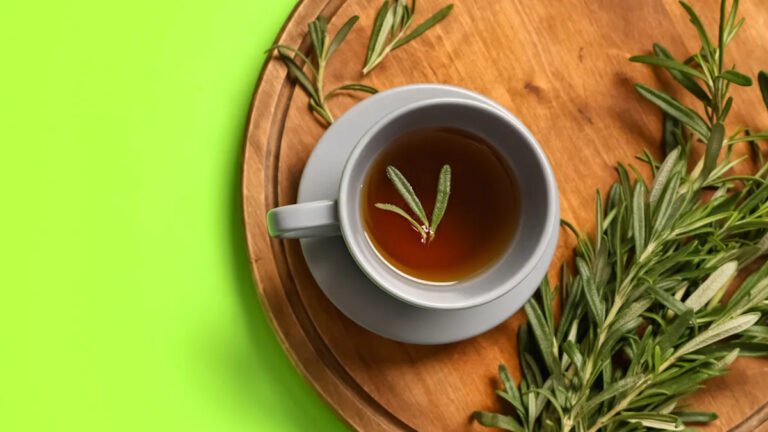We may receive a commission on purchases made from links.
Whether you’re a year-round tea lover or more of a seasonal sipper, there’s no question that the fall and winter months are simply the superior time for a piping hot cuppa. With some teas in particular, the pot is (metaphorically) sweetened by the immune system boosting, antioxidant-packed, healing properties of the herbs and other natural ingredients included. With illness always on the rise in the colder months, trying not to catch the cold that’s been going around at work or at your kid’s daycare might reasonably be a priority. Rosemary tea, although a little unorthodox, checks both of these boxes, boasting impressive antimicrobial properties, as well as possibly promoting focus and acting as a mild antidepressant — all through a delicious, herbaceous sip.
But although the brewing process for this herbal tea is generally the same as for any other leaf-based beverage, there are a couple of differences. Namely, the fact that you’ll be hard pressed to find premade bags of rosemary tea in stores. Instead, you’ll have to curate a real farm-to-fork situation for yourself by adding a sprig of the classic flavor enhancer — or a couple teaspoons of rosemary leaves — to boiling water to infuse the flavor directly, whether it’s taken from your DIY small herb garden or from the shelves of your local Whole Foods. Once the water has turned a gentle shade of golden brown, you can strain out the sprig and serve it hot or iced along with a touch of honey and maybe a squeeze of lemon.
Read more: We Tried Matcha Drinks From 10 Popular Coffee Chains And Ranked Them From Worst To Best
Making the perfect cup

a cup of rosemary tea with a sprig of rosemary and a slice of lemon – Igor Normann/Shutterstock
There are a few things to keep in mind when you’re trying to brew the perfect cup of tea. First, you’ll want to note how hot the water should be for the tea you’re making. When it comes to rosemary tea, wait until your water is at a rapid boil, or approximately 200 degrees Fahrenheit. Then, you can pour the water directly over a sprig of rosemary in your favorite mug. Or, if you have a loose-leaf tea strainer, such as the Ohtomber tea strainer, pull off the leaves, fill the strainer with them, and set it in your mug before pouring water in. Generally, rosemary tea should be steeped for five to six minutes, but you can take the herb out sooner or leave it in a little longer depending on whether you prefer a weaker or stronger tea. Just don’t forget to take it out entirely — when steeped for too long, the tea will turn bitter, and you’ll need quite a lot of honey to cover up that flavor.
If a chilled, refreshing pitcher of iced tea is more your vibe, steep your tea as usual, albeit in a slightly larger quantity and with a slightly higher concentration of rosemary to make up for the inevitable dilution that will happen when you pour it over ice cubes that melt. Put the strained tea in the fridge to cool, and then pour it over ice when you’re ready to drink. The best part? Herbal tea is generally your best bet for truly caffeine-free tea, and rosemary tea is no exception. So you can enjoy a cup of the beverage at any time of day or night without worrying that it’ll keep you up for hours.
Want more food knowledge? Sign up to our free newsletter where we’re helping thousands of foodies, like you, become culinary masters, one email at a time.
Read the original article on Chowhound.

